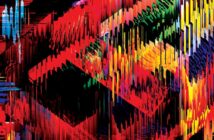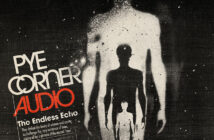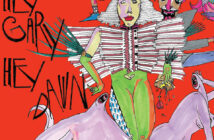Rob Mazurek and Chad Taylor made their first album together as the Chicago Underground Duo in 1998. With the 2010 release of Boca Negra, they’re up to their fifth album together as a duo. They have also made five other albums with others in various configurations of the ever-mutating Chicago Underground Collective. And in between all this, Mazurek and Taylor have been heavily involved in other ensembles, from post-rock outfits like Tortoise through to other jazz and avant-garde acts like Mazurek’ Exploding Star Orchestra and Marc Ribot. Busy people!
Boca Negra contains the Duo’ trademark mix of atmospheres and styles. It opens with a raucous free improvisation, which highlights the sympathy and telepathy that has developed between these two players in their years working together. The rest of the album includes tight and frenetic grooves such as “Spy on the Floor’ and delicate, beautifully-crafted melodies and layered loops such as “Hermeto’.
Typically for a Chicago Underground Duo album, Boca Negra also features a wide range of sounds and instruments. Mazurek and Taylor have continued to explore options beyond the cornet and drums which are notionally their first instruments. Here, they also make use of melodic percussion, woodwinds, piano, sequencers and a range of effects. And they’ve also deployed a range of interesting production methods, with Matt Lux (bass player for Iron and Wine, Isotope 217, Mandarin Movie and the Exploding Star Orchestra) on the boards.
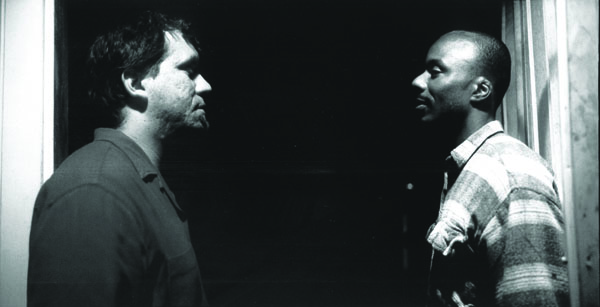
To coincide with the album’ release, I had a chance to put some questions to Rob Mazurek about the recording of Boca Negra in Sao Paolo and its place in their musical trajectory.
Kurt Iveson: I want to start by asking about the relationship between your music and place. You’ve been working together for years as the Chicago Underground, what does the ‘Chicago’ in ‘Chicago Underground’ mean to you guys?
Rob Mazurek: Chicago is my home. I moved to the city in 1983 and have used this city as a base of operation all these years. I split time between Brazil and Chicago these last years but almost all my projects and recordings have come from the city. Early on in the late 80s and early 90s I spent a great deal of time learning the language of jazz with such extraordinary musicians as Ken Prince, Lin Halliday, Dave Bloom, Billy Brimfield, Von Freeman, Jodie Christian and developing music based on the jazz music of the 50s with George Fludas, John Weber, Erma Thompson etc.
But later in the 90s I became excited at the prospect of creating a different sound. Based on the idea of the midwest and the ideas of such avante guardists like Sun Ra, Art Ensemble of Chicago, etc… I met Chad Taylor and Jeff Parker and began rehearsing new forms (at least for us) in order to find something else. These first Underground sessions were held at the Green Mill in Chicago and were the catalyst for what would come. The influences of the then brewing post rock thing and groups like Gastr del Sol, Jim O’Rourke, David Grubbs, Tortoise, Isotope 217 etc. Chicago is home. Always has been home.
KI: This was the first record you guys have made outside of Chicago. What is it about Brazil and its music that attracts you, why were you there?
RM: I invited Chad to play with My Exploding Star Orchestra featuring Roscoe Mitchell in Sao Paulo Brazil, where I was in residency for a while. I wanted to experiment with the idea of 3 drummers. It was a great success and enabled Chad and I to spend some time together, which is rare these days based on our schedules and the fact that Chad lives in NYC now and I shuttling back and forth from Sao Paulo and Chicago. Brazil is all about sound, rhythm, melody. It is hard to walk down the street and not hear someone whistling a song or clapping a rhythm or singing something. It has an extremely sound/music oriented culture that you just don’t find in many places I have been. This of course puts you in a state of mind that is quite joyful. But on the other hand, we have been developing our own vocabulary for more than 15 years, so location is not everything.
KI: So how are those elements of Brazil reflected in this record?
RM: The thing is, Brazilian music is so much more than the stereotypical samba music, or bossa nova. There is a deep history in subversive, radical sound, especially during the time of the dictatorship. The Underground movement in Brazil during the 60s and 70s was and still is intense stuff both in words and music. The music we made for this record is a sum or anti-sum of our experiences up to this point in time in this world and perhaps beyond.
KI: The name of the track ‘Hermeto’ is the only explicit Brazilian reference in song titles. What’s the story of this track?
RM: This is a song that Chad constructed based on some music that Hermato Pascoal gave us at an airport in Brazil. We saw him sitting there and struck up a conversation. A few minutes later he is writing something down on some music paper and hands us this amazing composition. Chad took a part of this and made the song, while I floated colour within the cascading pianos on my muted distorted cornet.
KI: Boca Negra has a mix of improvised and composed tunes. What does ‘composed’ mean in your writing and recording process? How ‘composed’ is ‘composed’? And what role does post-production play in crafting the final structure?
RM: We have always enjoyed the idea of blurring the lines between composed and improvised music. So for example, “Spy on the Floor’ was a written bass line and melody. The idea on “Spy on the Floor’ was to find the Rhythm. The electric Mbira songs are a mix of improvised and fixed ideas. The idea on these songs was to find the melody. Not many things were cut up in post production. A little bit on “Spy on the Floor’ and the rest was pretty much how we played it in the studio.
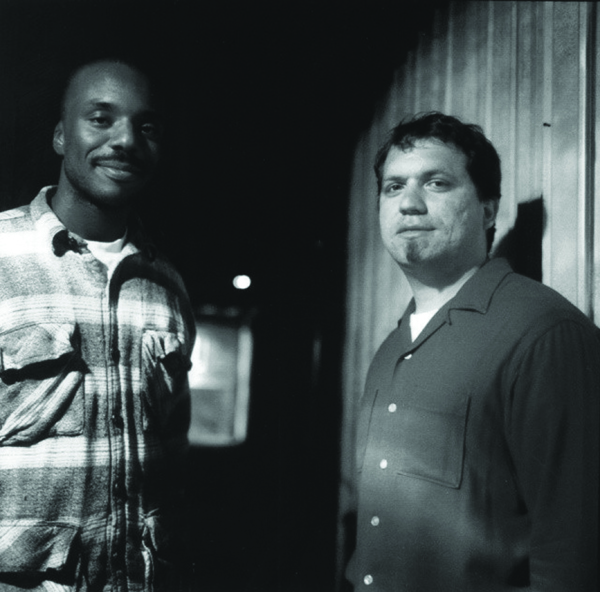
KI: Presumably you are both playing and composing all the time, but you both have so many different projects going on. What makes something right for the Duo as opposed to another project/group?
RM: I am always thinking of the Duo. It’s the group that I have spent the most time with. Whenever I get together with Chad, some kind of magic happens. It doesn’t matter how long we have been away from it, things just flow. Pretty much all the sessions have been fully planned and half found within the process. We try a lot of things and what works for us we use and what doesn’t work we throw out or perhaps use for other projects. The idea is finding the space between us that creates a kind of magic.
KI: Like your other albums, this one involves you both making use of heaps of different instruments – not just cornet and percussion, but electronics and computers, piano and flute and melodic percussion. Were there any particular instruments that either of you were working with for the first time here, that you reckon drew out some new ideas or approaches?
RM: Chad has been studying the Mbira and this sound done in this way is very new to the group. Chad also rolled up the sleeves and got in there on the computer, programming some beautiful stuff. I stuck more to the cornet for this recording with some flute. I was more involved with the mixing of the record where we did some interesting things with filtering. And for sure we hit upon some areas that were new to us as far as orchestrating silence.
KI: Are most of the effects added in post-production? Is it important to hear them as you’re playing, to have control over their dynamics in the process of recording, or do you find yourself applying them with some distance from playing?
RM: For this recording most of the filtering of sound was done live. Chad using ring modulator and analog delay for the Mbira and me the same for the cornet and flute. We like to have complete control over this. The idea is that the instrument filtered is the instrument and we play that. The added things in post-production usually only act as an enhancement of the initial idea.
KI: Could you tell us about your relationship to jazz? You both bring a jazz background (among other things) to your music, and there’s lots of improvisation in your music, but your albums don’t feel to me like “jazz records”, and I guess I find it hard to pin down why I feel like this. Is it something about focusing on creating atmospheres instead of displaying virtuosity? Or something else? How do you think what you do relates to jazz?
RM: We were both brought up playing jazz and still do play jazz. My personal trajectory has moved into realms of noise (Italian futurists, Merzbow, John Cage, Kevin Drumm). The idea of silences as reflected in the perception works of James Turrell, or the paintings of Mark Rothko, piano music of Boulez, the minimalism of Chalemagne Palestine and the silent energy of Bill Dixon. I think our music relates to everything. This truly is our music.
KI: That leads me to ask about how you find an audience for your music. Part of the function musical boundaries perform is not just to separate but also to find and specify an audience for performances and recordings. “This is a jazz record, you’ll find it in the jazz section, hear it on jazz radio.” So, how have you gone about building and reaching an audience for your music, when it doesn’t neatly fit in a pre-established category?
RM: We play, we record, we try to be as honest as we can be about the pure sound we are trying to project.
Boca Negra is released through Thrill Jockey.

